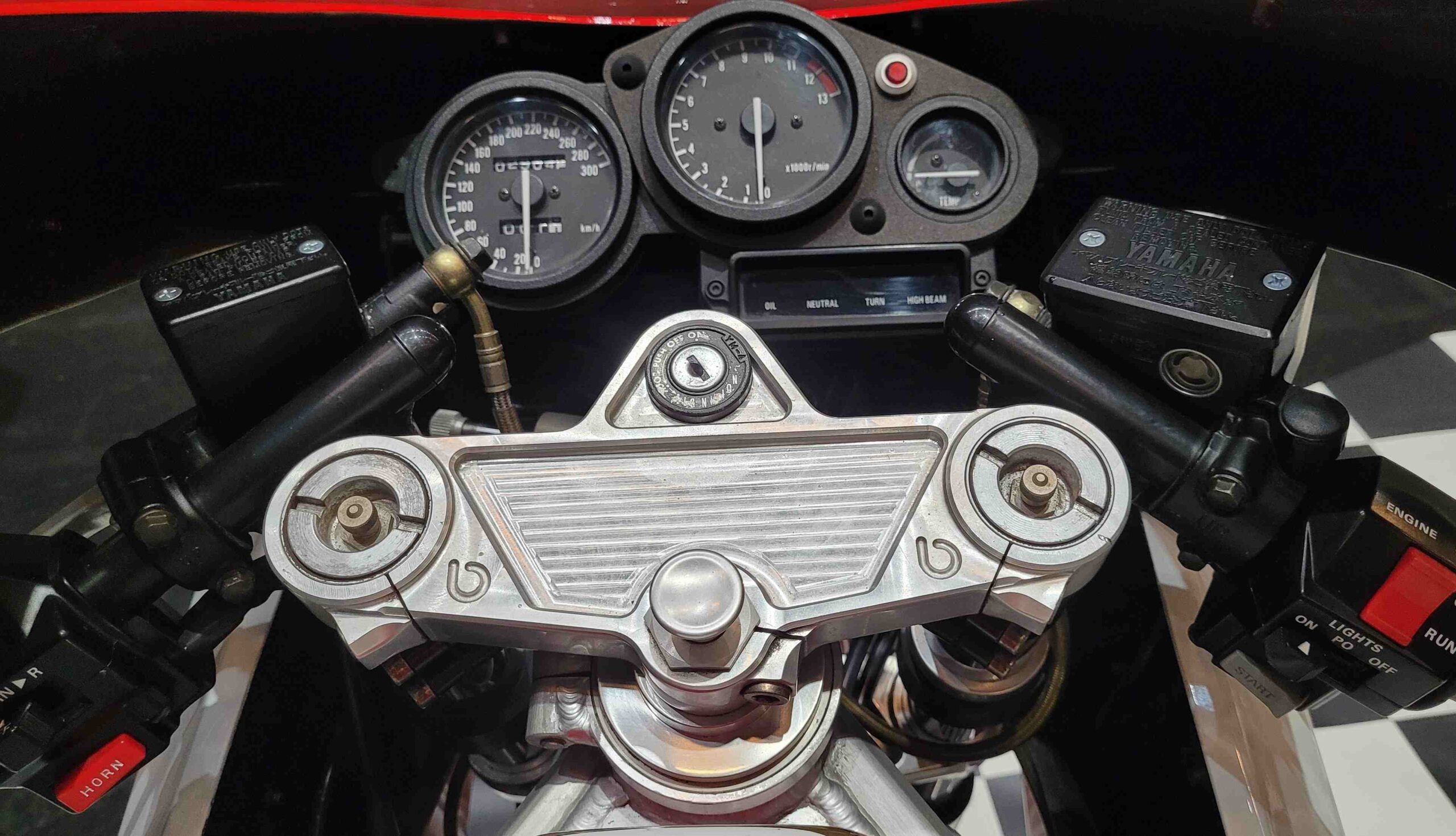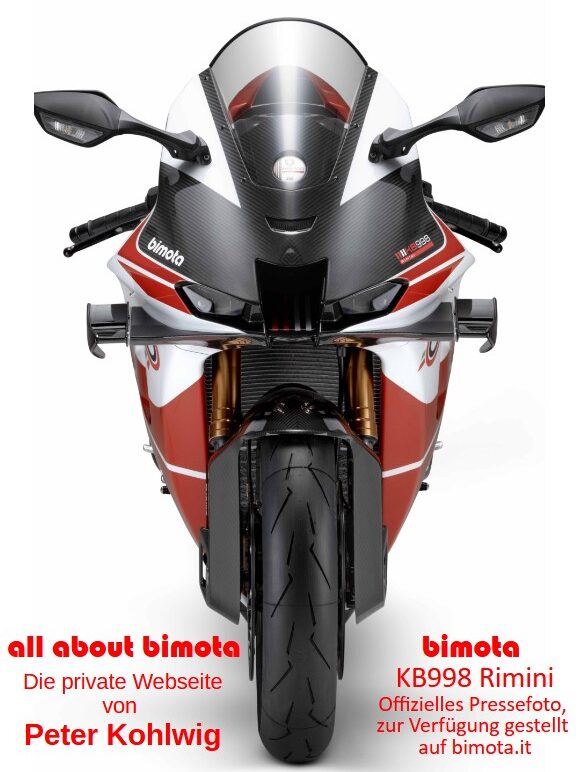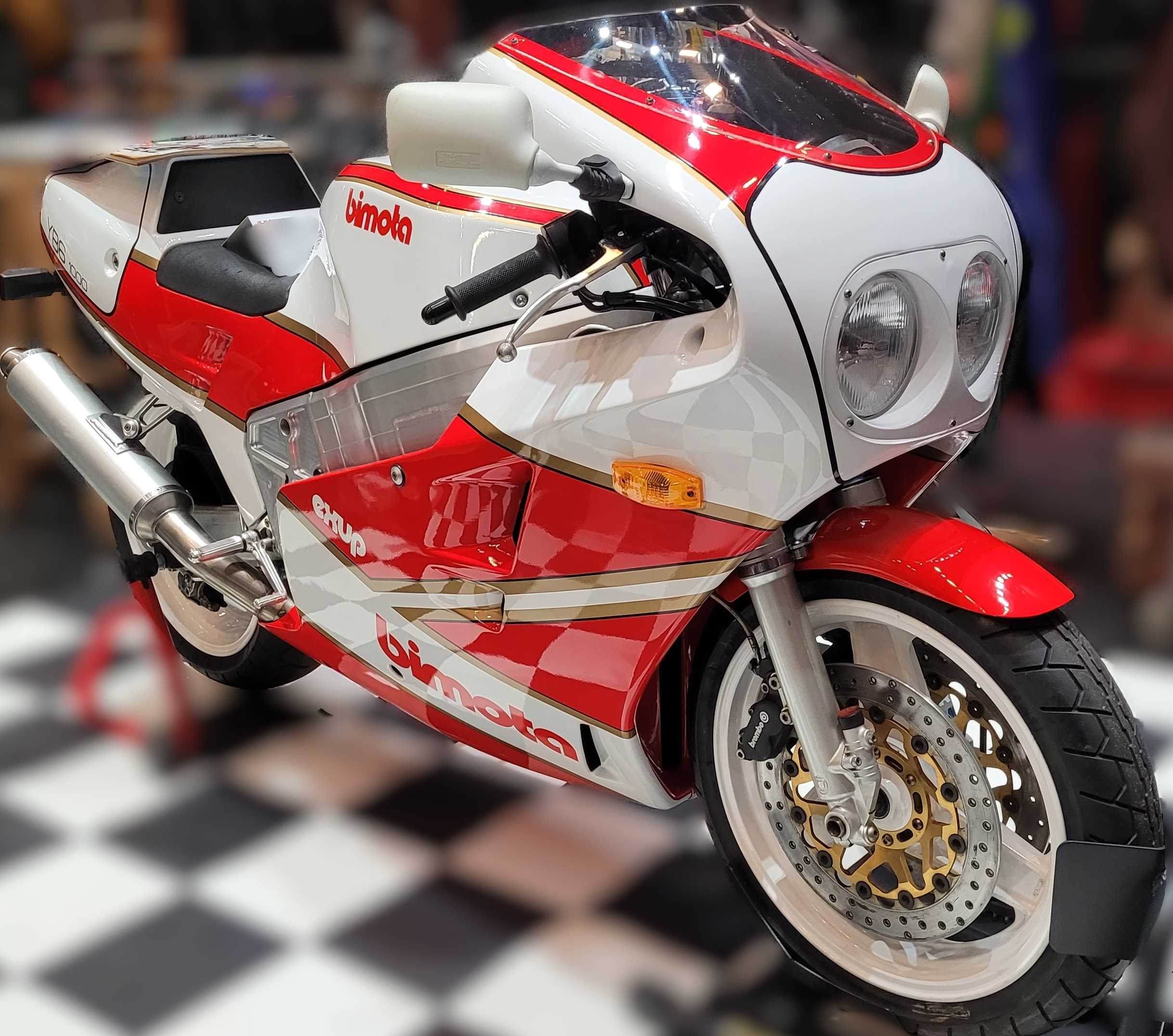
| Designer | Frederico Martini | Premiere | Rimini 1989 |
| Production period | 1989 – 1990 | Production numbers | 114 |
| Power | 108 KW (148 PS) | Displacement | 1002 ccm |
| Topspeed | 278 km/h | Weight | wet 210 kg dry 195 kg |
| Price | 38.300 DM (1989) | Colours | red / white / gold |
| Technical basis | Yamaha FZR 1000 |
At first glance, the YB6 Exup, introduced in 1989, differs from its predecessor only by the „Exup“ decals on the full fairing, as the paint scheme remains the same. Despite its visual similarity to the YB6, it is technically identical to the YB8, which was introduced in the same year. Bimota uses the latest generation of the FZR 1000 engine in both models.
The 3GM engine generation is an evolution of the previous 2LA engines. Externally, the black-painted 2LA engines are easily distinguishable from the aluminium colored 3GM engines. However, there are also several technical improvements. Displacement increases from 989 cc to 1002 cc, fuel mixture preparation is handled by 38 mm Mikuni carburetors instead of 36 mm, the cylinder head has been completely redesigned, the crankshaft bearings have been reinforced, and the new engine features an Exup system.
Exup stands for „Exhaust Ultimate Power Valve“ and was first introduced by Yamaha in the FZR 1000 in 1989. It consists of an electronically controlled valve, operated by a servo motor and Bowden cables, which adjusts exhaust back pressure depending on engine speed and load. This system improves cylinder filling at low and mid-range RPMs, resulting in increased torque.
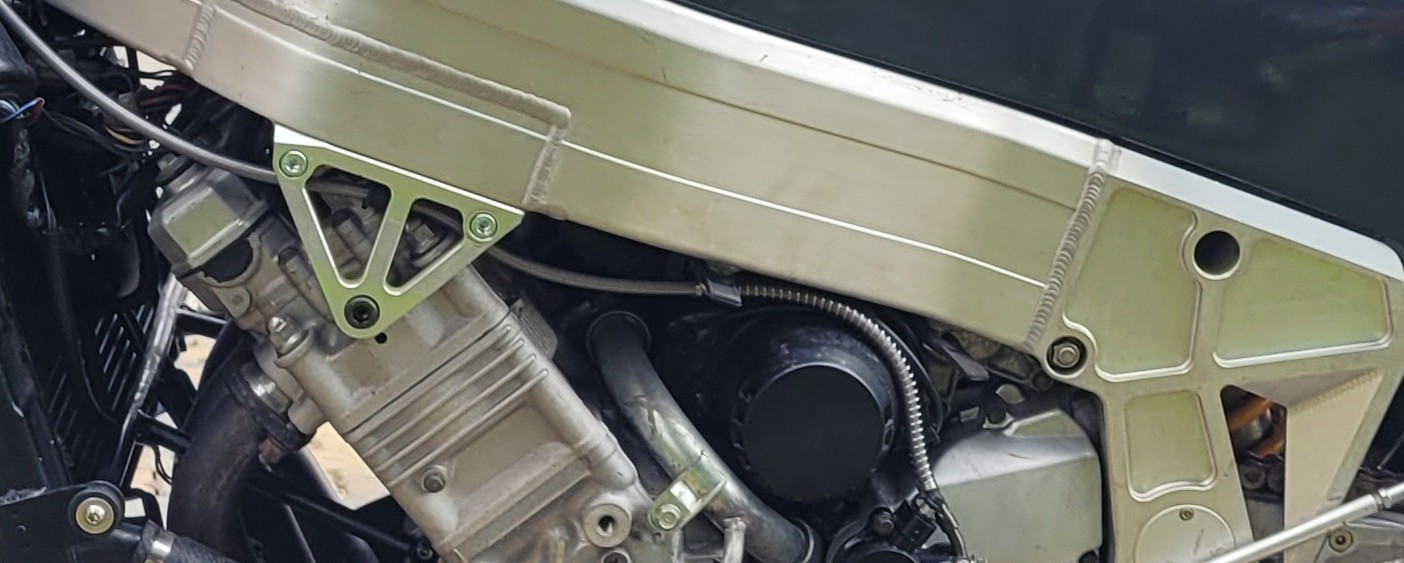
The YB6 frame had to be adapted to accommodate the new FZR 1000 engine version. The cross brace behind the carburetors was moved slightly backward to make space for the larger Mikuni carburetors. Thanks to new engine mounts on the cylinder head, the engine can now be bolted directly to the frame using a bracket. The adapter plates used with the 2LA engines are no longer needed.
The fairing and monocoque were also revised for the Exup engines. The upper section of the fairing is significantly wider, the front air intakes have been removed, the side cooling vents are now two-part, and the headlights have a larger diameter.
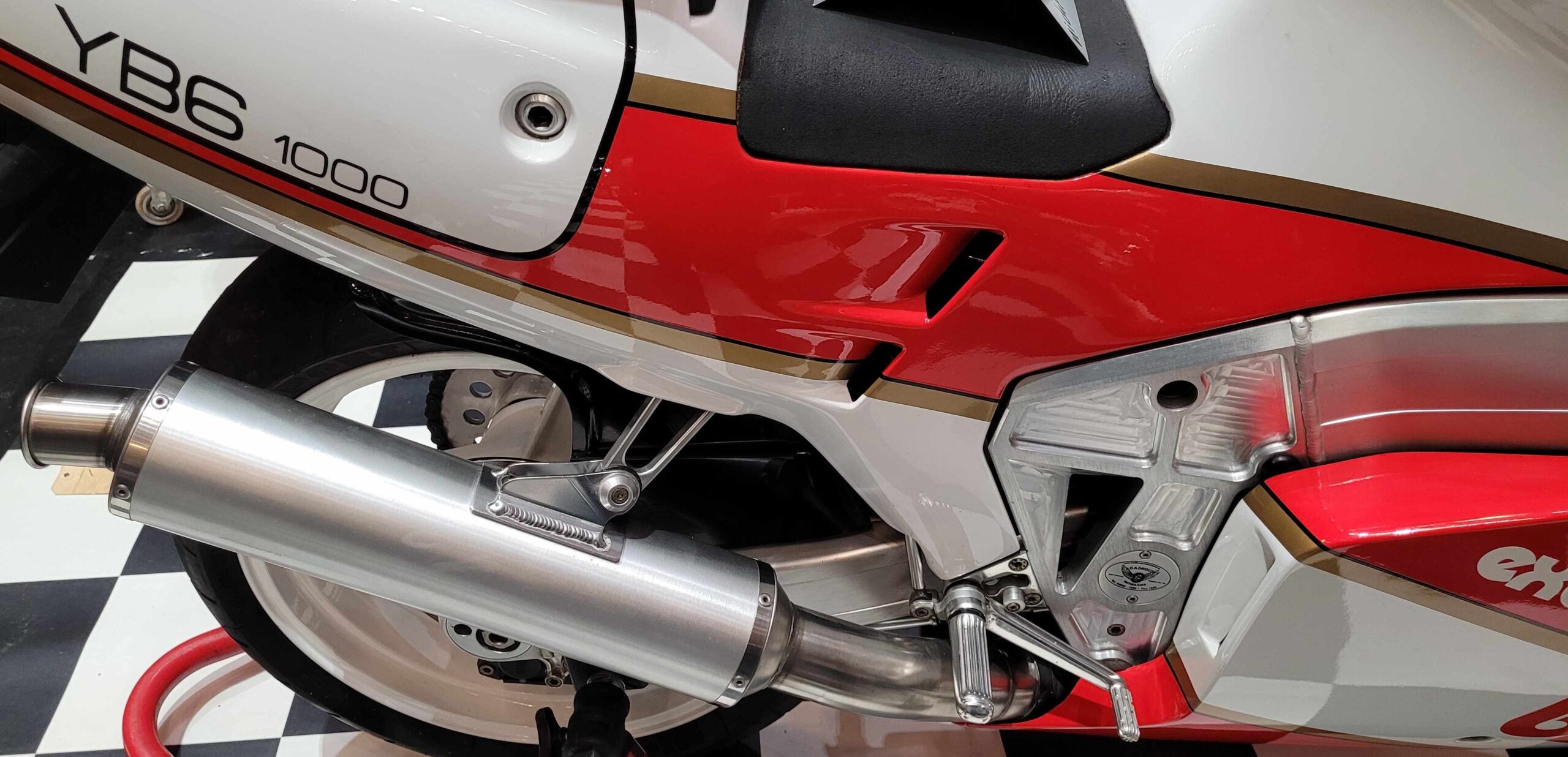
The monocoque has additional cooling vents beneath the seat and rectangular instead of round taillights. The two side-mounted front attachment points have been removed and replaced with a central mounting point at the front end of the monocoque.
